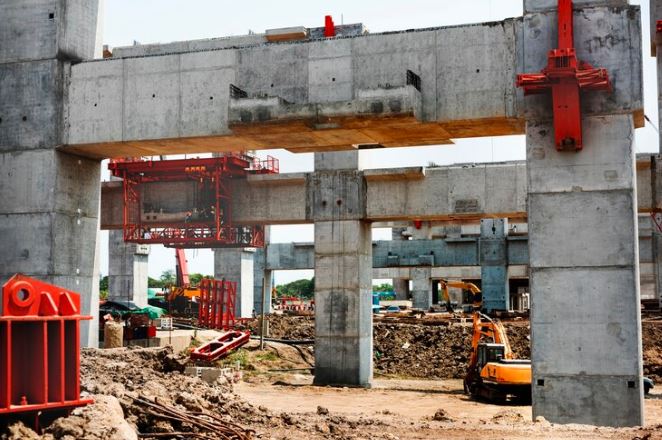Residential demolition is the careful dismantling and removal of a residential structure, such as houses, apartments, garages, or extensions. This process is necessary when a building needs to be cleared for new construction or when parts of the home have reached the end of their structural integrity. Residential demolition can vary in scope, from taking down an entire house to removing only specific parts, like an old garage or an outdated wing of the home.
1.2 Why is Residential Demolition Necessary?
There are several reasons why residential demolition may be required:
- Structural Failure: Buildings deteriorate over time, and when a house’s foundation or framework becomes unsound, demolition is often the safest option.
- Renovations or Remodeling: Sometimes, homeowners want to expand their living space or modernize their homes. In such cases, partial demolition is necessary to make room for new construction or to update an outdated structure.
- Clearing Land for New Construction: Old homes are often demolished to clear the land for new, more modern developments.
- Health and Safety Hazards: Homes that have been severely damaged by fire, storms, or natural disasters, or that contain hazardous materials like asbestos, may need to be demolished to prevent risks to occupants and the community.
- Neighborhood Improvement Projects: Cities may mandate the demolition of abandoned or dilapidated homes to improve community safety and aesthetics.
2. Types of Residential Demolition
2.1 Mechanical Demolition
Mechanical demolition is the most common and quickest form of demolition, involving the use of heavy machinery like excavators, wrecking balls, and bulldozers. This method is ideal for tearing down entire structures and is favored for its efficiency. However, it can generate a lot of dust and debris, requiring proper containment and cleanup.
- Key Benefits: Speed and cost-effectiveness.
- Drawbacks: High amounts of debris and potential environmental impact.
2.2 Deconstruction (Selective Demolition)
Deconstruction, also known as selective demolition, is a more environmentally conscious approach. Rather than destroying the entire structure, workers dismantle it carefully to salvage materials such as bricks, wood, windows, and doors. These materials can be reused or sold, reducing landfill waste and potentially offering financial returns.
- Key Benefits: Eco-friendly, reduces waste, and allows material reuse.
- Drawbacks: More time-consuming and costly due to labor-intensive processes.
2.3 Implosion Demolition
Implosion demolition involves strategically placing explosives inside a structure to cause it to collapse inward, minimizing the impact on surrounding areas. This method is typically used for large buildings in densely populated urban areas. While rare for residential structures, implosions are highly effective when space constraints and safety are major concerns.
- Key Benefits: Quick and efficient for large structures.
- Drawbacks: Requires expert planning and carries a higher risk of unintentional damage.
2.4 Interior Demolition
Interior demolition focuses on stripping out the inside of a structure while preserving the exterior. This method is often used for renovation projects where the shell of a home is still sound, but the interior needs significant upgrades.
- Key Benefits: Allows for renovation without complete teardown.
- Drawbacks: Limited to interior spaces and may expose workers to hazardous materials like asbestos or lead paint.
3. The Residential Demolition Process
3.1 Planning and Permits
Before any demolition can begin, thorough planning is essential. This includes consultations with engineers, contractors, and architects to determine the safest and most efficient methods of demolition. In addition, obtaining the proper permits from local authorities is a legal requirement. Depending on the location and scope of the project, permits may take weeks or months to acquire.
- Common Permits Needed: Demolition permit, asbestos removal permit, noise variance permit.
3.2 Environmental Concerns
Demolition must be done in compliance with environmental regulations to avoid soil, air, or water contamination. This includes dealing with hazardous materials like asbestos or lead paint and ensuring that debris doesn’t pollute nearby areas.
- Environmental Impact Assessments: These may be required to ensure the demolition won’t harm wildlife or local ecosystems.
3.3 Site Preparation
Before demolition can begin, the site must be thoroughly prepared. This involves clearing the property of any belongings and furniture, disconnecting utilities like gas, electricity, and water, and erecting safety fencing around the area to prevent unauthorized access.
- Safety Precautions: Warning signs and barriers are critical to ensuring safety for nearby residents.
3.4 Demolition Execution
Once the site is ready and permits are in place, the demolition process begins. Depending on the method chosen, this phase could last anywhere from a few hours (for small structures) to several days (for larger, more complex demolitions).
- Execution Time: Factors such as the size of the structure, demolition method, and weather conditions can affect the timeline.
3.5 Site Cleanup and Waste Removal
After demolition is complete, the site must be cleared of all debris. This involves sorting materials for recycling, disposing of hazardous waste properly, and preparing the site for future construction. In some cases, landscaping may be required to restore the site.
4. Costs Involved in Residential Demolition
4.1 Factors Affecting Cost
Several factors influence the cost of residential demolition, including:
- Size of the structure: Larger homes or buildings will naturally incur higher costs.
- Type of demolition: Mechanical demolition is generally less expensive than deconstruction or implosion.
- Location: Costs vary based on regional labor rates and environmental regulations.
- Hazardous Materials: The presence of asbestos, lead, or other hazardous substances increases the cost due to specialized removal requirements.
4.2 Cost Estimation
On average, a standard residential demolition project costs between $6,000 and $15,000, but this can fluctuate depending on the complexity of the job. Homeowners should get detailed estimates from multiple contractors to ensure they’re getting a fair price.
4.3 Average Cost by Type of Demolition
- Mechanical Demolition: Typically the most affordable option.
- Deconstruction: More expensive due to labor costs but can offset costs through salvaged materials.
5. Safety Measures in Demolition
5.1 Hazardous Materials and Asbestos Removal
Before demolition, hazardous materials must be identified and safely removed. Asbestos, in particular, requires licensed professionals to handle and dispose of due to its serious health risks.
5.2 Safety Gear and Protocols
Workers must be equipped with safety gear like helmets, gloves, protective suits, and eye protection. OSHA standards also dictate specific protocols to prevent accidents, such as fall protection and the use of guardrails or safety harnesses.
5.3 Structural Integrity Considerations
A structural assessment is conducted to ensure that demolition can proceed without risking unexpected collapses. Engineers and contractors evaluate the building’s foundation and framework to determine the safest method.
6. Environmental Impact of Residential Demolition
6.1 Recycling and Reusing Materials
Demolition doesn’t have to be wasteful. Many materials like wood, metal, and concrete can be recycled or reused in future construction, reducing the project’s environmental footprint.
6.2 Managing Hazardous Waste
It’s crucial to follow proper disposal methods for hazardous materials like asbestos, lead-based paint, and chemicals. Improper disposal can result in environmental fines and health risks.
6.3 Reducing Carbon Footprint
Opting for modern machinery with lower emissions and deconstruction methods can help reduce the carbon footprint of a demolition project, making it more eco-friendly.
9. Hiring a Residential Demolition Contractor
9.1 Qualities to Look for in a Contractor
When hiring a demolition contractor, look for a company with a proven track record, licensing, and insurance coverage. Contractors should have experience in residential demolition and a portfolio of successful projects.
10.1 Advancements in Demolition Technology
Robotic demolition and the use of drones are revolutionizing the industry by increasing precision and reducing labor costs. These technologies allow for safer and more efficient demolition, particularly in urban areas where space is limited.
10.2 Sustainability Trends in Demolition
There is a growing focus on sustainability in demolition, with an increasing emphasis on deconstruction and the recycling of materials to minimize environmental impact.
11. FAQs about Residential Demolition
11.1 How Long Does the Process Take?
Demolition timelines vary depending on the size and scope of the project. Smaller demolitions can take just a few days, while larger or more complex demolitions could take weeks.
11.2 Can I Stay in My Home During Demolition?
For safety reasons, homeowners must vacate the property during demolition. In some cases of interior demolition, certain areas of the home may remain livable, but this is rare.
11.3 Is Residential Demolition Covered by Insurance?
In some cases, home insurance policies may cover the cost of demolition, particularly if it’s necessary due to structural damage caused by natural disasters or other insured events. Always check with your insurance provider.
12. Conclusion
Residential demolition is a complex process that involves a combination of planning, safety protocols, environmental considerations, and costs. Whether you’re demolishing an entire home or just part of it, hiring an experienced and licensed contractor is critical to ensuring a smooth and successful project. Be mindful of the environmental impact, explore sustainable options, and ensure you’ve covered all your bases before proceeding with demolition.









